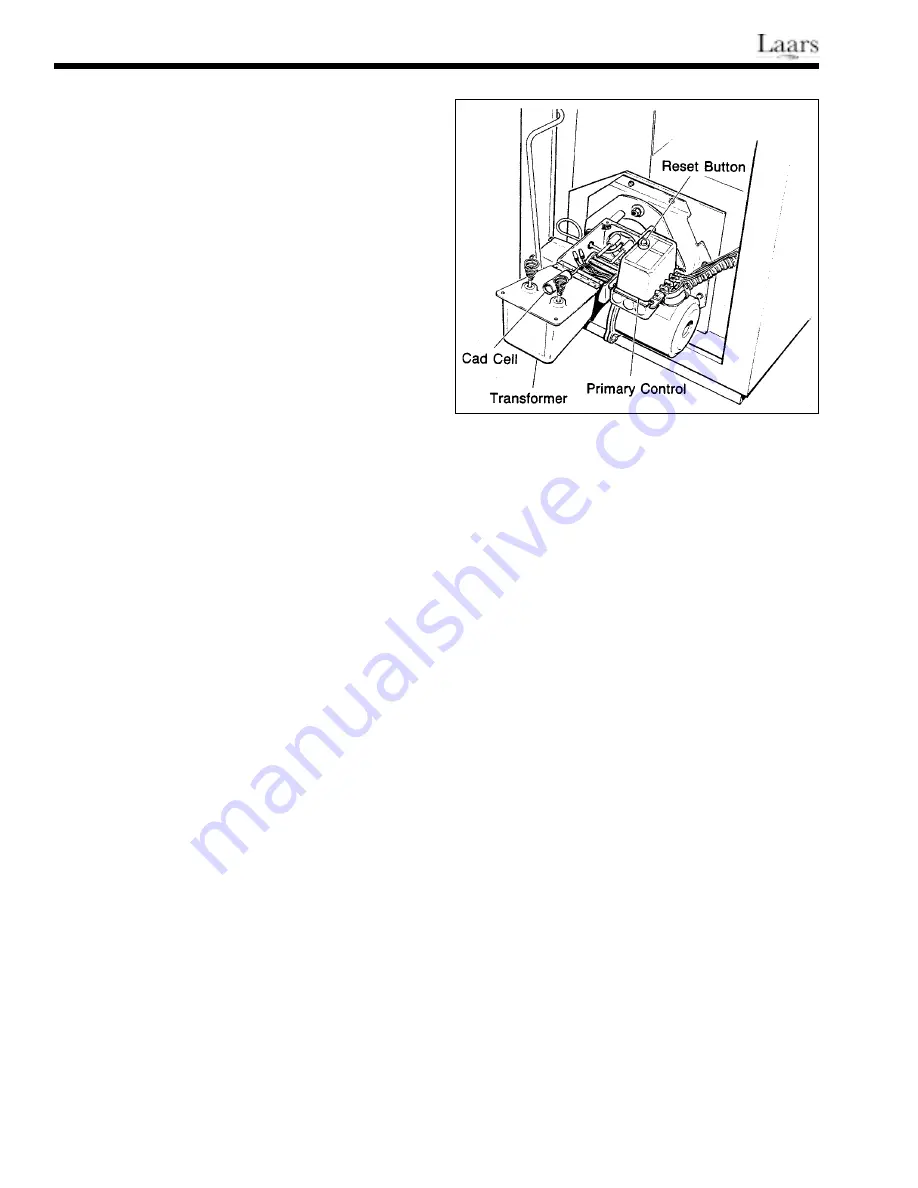
Page 14
a bypass plug must be installed in the fuel pump.
The plug is supplied with the oil burner. There is
a decal located on the fuel pump showing where
the bypass plug goes.
If a fuel unit is set up for a two-pipe system, but
is actually connected to a one-pipe system, the
pressure in the fuel pump builds up to over 300
psi when the burner turns on. This will cause the
motor to bind and stop running or ruin the pump
seals, or both,
2.
An oil filter must be installed on the inlet line. A
very small amount of dirt in the oil can plug the
nozzle. A properly sized oil filter is shipped with
the heater (see Fig. 11).
3.
Is there oil in the storage tank?
4.
Are all of the shut-off valves on the oil lines
open?
5.
Are the fuel lines adequately sized according to
the table on page 5?
6.
Are there any leaks in the fuel line? A very small
leak can cause the fuel pump to suck air into the
system, resulting in failure to operate or a
pulsating, noisy fire.
7.
Is the unit properly grounded electrically? This is
extremely important. Use of PVC piping in the
pool filter system prevents grounding through the
piping.
8.
If a time clock is installed, is there power to the
timer? Is the timer motor working? There is
usually a visual motor check opening on the timer
mechanism. Is the switch located below the timer
dial “ON”?
9.
Are there any loose wires or terminals?
10.
Is the pool filter clean, and is the pump operating
properly?
4D. Operating Sequence
When every part of the system is working
properly, the heater will go through the following
sequence:
1.
When the filter pump builds up enough pressure
in the piping, the contacts in the heater pressure
switch close.
2.
The heater thermostat calls for heat completing
the circuit between the two thermostat terminals
on the primary control of the oil burner.
3.
The primary safety control on the oil burner goes
through a self-test sequence. One of the steps in
the sequence is to check out the cadmium cell
flame detector. If the cad cell senses light, the
burner will not fire. If everything checks out, the
burner motor and ignition transformer are
powered.
On 60Hz models, the ignition transformer
operates during the entire burner operation.
4.
If the cad cell does not sense a good flame within
30 seconds the primary control de-energizes the
motor and ignition transformer. This turns off the
heater. It can be manually restarted by pushing
the reset button after waiting about one minute.
5.
During the period when the filter pump is
running, which is set by the time clock, the
thermostat will turn the burner on and off as
required to maintain the water temperature set on
the thermostat.
6.
If a time clock is used, the contacts in the
Fireman switch open about 20 minutes before the
pool filter cycle is completed. This shuts off the
oil burner. The oil burner cannot be restarted
during this period. The filter pump continues to
run for another 20 minutes, transferring any heat
stored in the firebox to the pool.
4E. Troubleshooting
NOTE: These troubleshooting procedures
require connections to electrical terminals and jumper
wires to check operation. To avoid electrical shock,
turn off electric power before servicing line voltage
controls. Never leave a jumper wire in place to fix a
heater. This would bypass safety and operating
controls.
4E-1. Burner will not start (motor and
transformer do not come on)
Figure 20. Cad Cella and Primary Control.






































